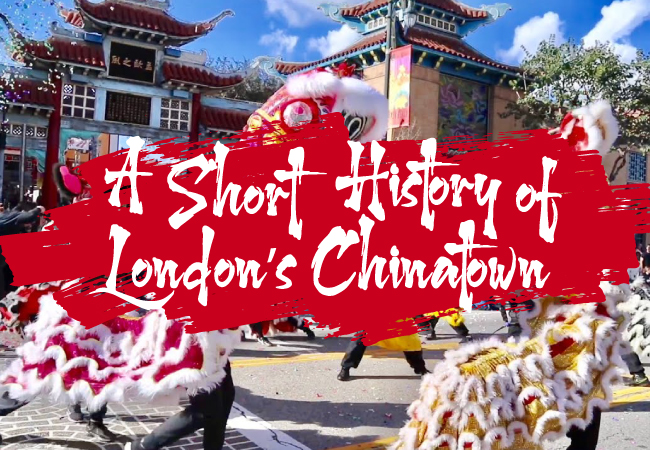A Chinatown has existed in London since the early 18th century, but it didn’t always brush elbows with the seedy glamour of Soho.
What is Chinatown’s History?
The mid 1880’s saw a steady flow of Chinese sailors come to Limehouse in East London. They travelled on ships with the British East India Company which imported popular Chinese commodities such as tea, ceramics and silks. The sailors stayed for periods of time in barracks in the London Docklands, some settling permanently, and the area of Limehouse became the site of the first Chinatown, full of restaurants and hardware shops.
The Chinese migrant population of Limehouse increased to 337 by 1921, with around 40% of the inhabitants living in Limehouse. While Limehouse remained a relatively small community before WWI, the distinctive ancestral heritage was already established in the area.
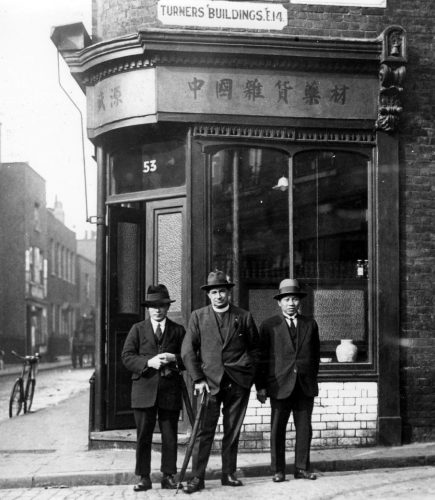
Iconic architecture included Foon’s emporium at 57 Pennyfields, Chong Chus’ restaurant in Limehouse Causeway, and the Chinese laundry on the corner of Castor Street.
The British public had developed a taste for the orient; fine silks and exotic spices equalled class and status. However, the Opium Wars between Britain and China manifested resentment towards the Chinese who had settled in Limehouse.
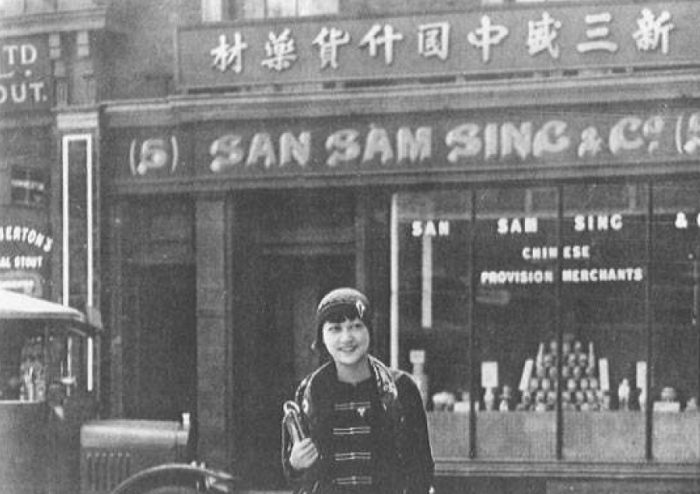
Sensationalised fears surrounding Limehouse’s Chinatown were so great, known in the tabloids as the ‘Yellow Peril’, that it inspired many illustrators and writers, creating a dangerous mystique that still exists today.
Writer Arthur Ward, under the pseudonym Sax Rohmer, created the iconic character ‘Fu Machu’. An evil supervillain, he tortures his victims in peculiar ways, has exotic pets and is involved with secret organisations.
Sax Rohmer admitted himself that he created the character without any prior knowledge and understanding of Chinese culture. For the last 90 years, the character has appeared in comics, films, and radio productions. The stereotype still exists today.
Where is Chinatown in London Now?
During the Blitz, the East End was heavily bombed. At the time, vital goods were stored here for the war effort. If the Luftwaffe could disable the East End, they could cut off major supplies to and from London. A densely populated area full of local families, the Nazi’s were also hoping for high mortality rates, therefore diminishing morale.
The East End was so badly damaged that Chinatown lay in rubble, with little hope of resurrection. The docklands finally shut down leaving many jobless and homeless.
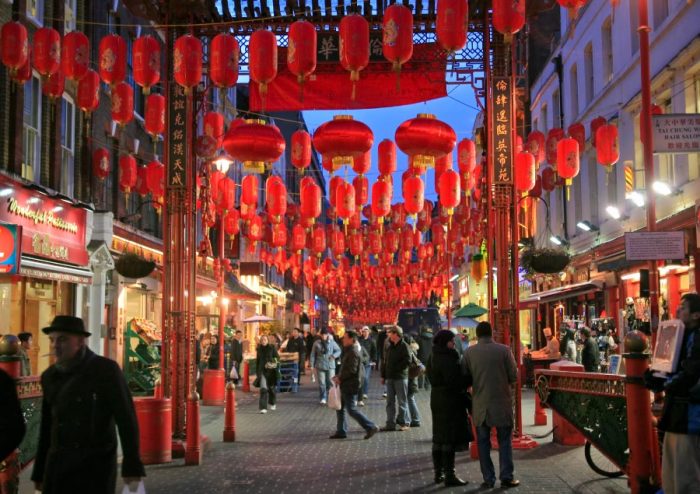
When they made the move to Gerrard Street in the 1950’s, Soho had a large reputation and low rent. British soldiers returning from the Far East had developed a taste for the intense flavours of Chinese food and British people had grown bored of pies and jellied eels. So, upspring Chinese supermarkets and restaurants, as well as more Chinese entrepreneurs.
By the late-60s Chinatown was in full swing. The population was in the tens of thousands and a travel agency was set up to deal with the huge number of restaurant workers arriving from China.
In the 1980’s, red lanterns decorated the streets and the pedestrianisation of Gerard Street, parts of Newport Place and Macclesfield Street had also begun.
How to Get to Chinatown
London’s Chinatown is close to Central London’s main attractions including Leicester Square, Theatreland, Covent Garden and Soho.
The nearest underground stations to Chinatown are Leicester Square and Piccadilly Circus.
Various buses link Chinatown to many other areas and taxis are plentiful.
Chinese New Year
The Chinese New Year Celebrations in London are the biggest anywhere outside of Asia. Head down to the bustling streets for traditional dancing, a colourful parade, delicious food and stage performances.
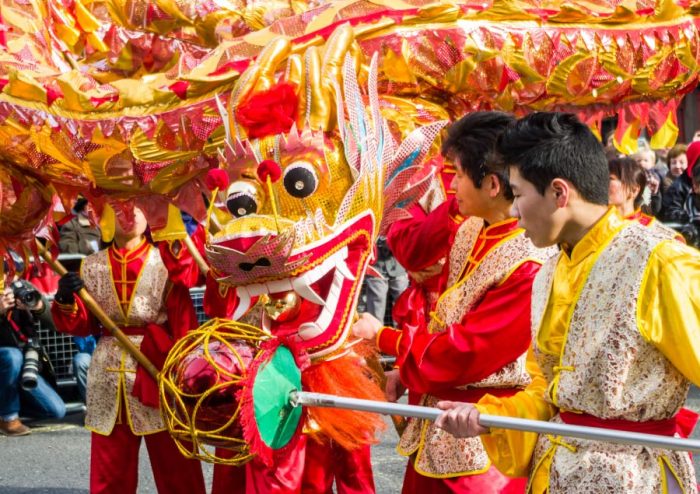
Make sure to look out for the cabbages hanging from windows. If the Chinese dragon in the parade chooses to ‘eat’ yours, its good luck for the year!
If you want to see more of London why not try a Hop-On Hop-Off Bus Tour?
Don’t forget to share your magical pictures with us @goldentoursuk!
